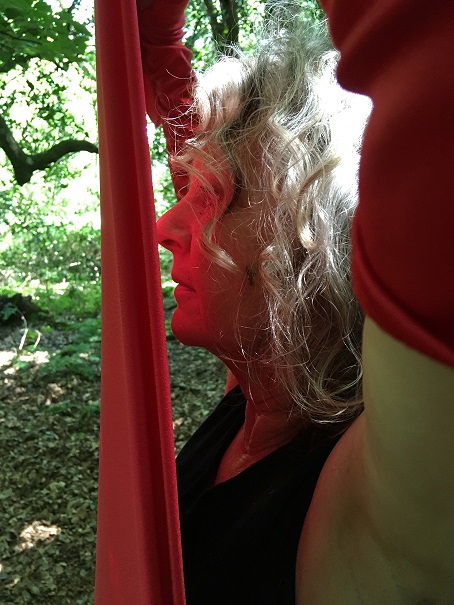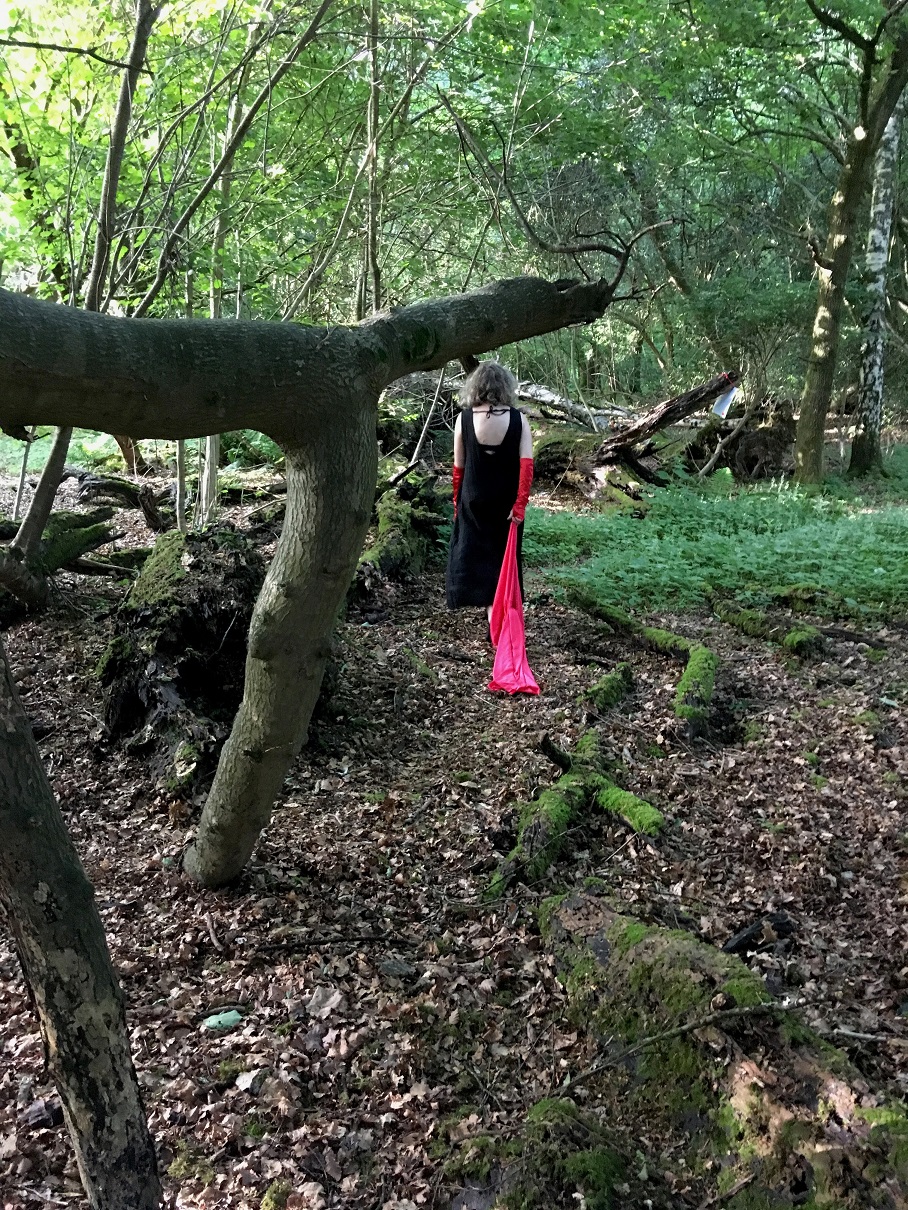 In June Binsted Woods were host to something magical and important, never seen there before. With the blessing of landowner Luke Wishart, movement artist Tina Cockett, who grew up in Walberton, worked over several months and seasons to develop an immersive dance performance called ‘Deep in the Woods Something Stirs’.
In June Binsted Woods were host to something magical and important, never seen there before. With the blessing of landowner Luke Wishart, movement artist Tina Cockett, who grew up in Walberton, worked over several months and seasons to develop an immersive dance performance called ‘Deep in the Woods Something Stirs’.
The invited audience gathered by Binsted Church and were led along footpaths, through fields, across the north end of Binsted Park and into the woods. Hanging photographs showed the way and documented various things Tina found over the months – primroses, feathers, mushrooms, a car tyre, rubbish, the Madonna’s face. Tied to trees by bits of red cloth, they suggested themes of danger, blood, and life.
Another guide led the attenders off the path towards a huge, half-fallen, still-living beech tree, resting on its elbows. Another fallen tree, this one quite rotten, provided minimal seating, but most stood. Under the huge tree, Tina emerged from the ground, moving slowly and with meaning, perhaps embodying the spirit of the woods.

With just herself, dressed in black, a tube of red cloth, a skein of red material ‘string’, the dappled forest floor, the sound of the wind and the chirping of birds, starting in silence and opening out to some resonant words, Tina stopped time and made us feel the interconnectedness of the ‘wood-wide-web’, some of the creatures in it, and the danger to it from development, road building, climate change and extinction.
A symbolic web, held at different points by the audience and the surrounding trees, was created then cut apart, an emotional gesture softened by the words ‘We still have time’. A final question, ‘Do you have time for Binsted Woods?’, left us moved and pensive as Tina melted back into the woods.
Looking back – perhaps as a refuge from the present – I measured the girth of the huge beech tree as 2.7m. A website told me it was about 158 years old. It was probably planted as part of the landscaped Binsted Park, made by the Read family around 1810. A map of 1825 shows a grove of trees north of Binsted House as one of the features of the Park and another shows them to be beech trees.
Tina’s project will develop further, possibly with some filming and the possibility of ‘pop-up’ performances elsewhere.
A unique occasion – and one which would not be possible if Arundel Bypass Option 5A is built. The road, on a high embankment, would pass nearby, through Binsted Park from one end to the other, in effect destroying it. Traffic roar would replace the sounds of wind and birds. The meditative atmosphere created by the continuity of the forest giants, some half-fallen and some decayed, would be broken.
Reported by Emma Tristram. First photo: Marie Paul.

